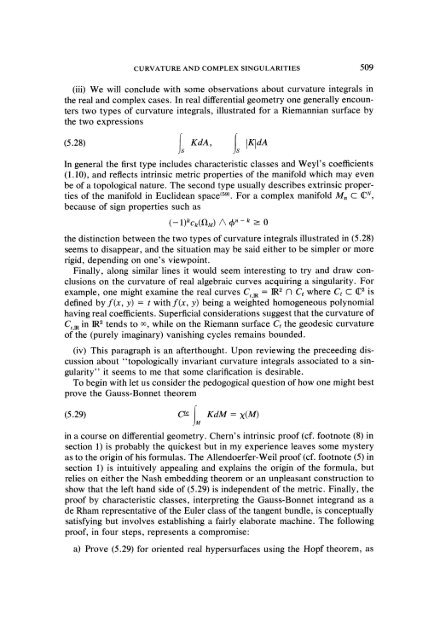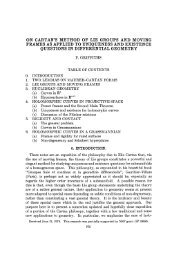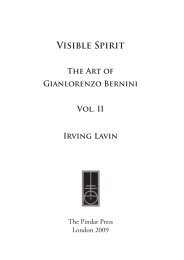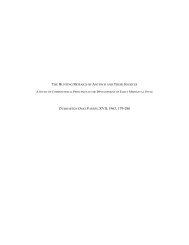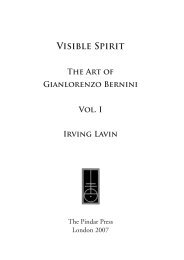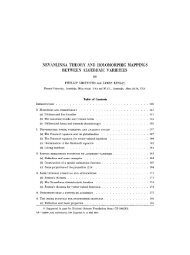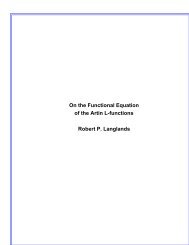View PDF - Project Euclid
View PDF - Project Euclid
View PDF - Project Euclid
You also want an ePaper? Increase the reach of your titles
YUMPU automatically turns print PDFs into web optimized ePapers that Google loves.
CURVATURE AND COMPLEX SINGULARITIES 509<br />
(iii) We will conclude with some observations about curvature integrals in<br />
the real and complex cases. In real differential geometry one generally encounters<br />
two types of curvature integrals, illustrated for a Riemannian surface by<br />
the two expressions<br />
(5.28) Is KdA, .ts IK]dA<br />
In general the first type includes characteristic classes and Weyl’s coefficients<br />
(1.10), and reflects intrinsic metric properties of the manifold which may even<br />
be of a topological nature. The second type usually describes extrinsic properties<br />
of the manifold in <strong>Euclid</strong>ean space. For a complex manifold M, C<br />
because of sign properties such as<br />
(_ 1)kcc(t) / n-k _> 0<br />
the distinction between the two types of curvature integrals illustrated in (5.28)<br />
seems to disappear, and the situation may be said either to be simpler or more<br />
rigid, depending on one’s viewpoint.<br />
Finally, along similar lines it would seem interesting to try and draw conclusions<br />
on the curvature of real algebraic curves acquiring a singularity. For<br />
example, one might examine the real curves Ct,IR IR C where Ct c is<br />
defined by f(x, y) with f(x, y) being a weighted homogeneous polynomial<br />
having real coefficients. Superficial considerations suggest that the curvature of<br />
Ct,R in IR tends to , while on the Riemann surface Ct the geodesic curvature<br />
of the (purely imaginary) vanishing cycles remains bounded.<br />
(iv) This paragraph is an afterthought. Upon reviewing the preceeding discussion<br />
about "topologically invariant curvature integrals associated to a singularity"<br />
it seems to me that some clarification is desirable.<br />
To begin with let us consider the pedogogical question of how one might best<br />
prove the Gauss-Bonnet theorem<br />
(5.29) ct-e l KdM x(M)<br />
in a course on differential geometry. Chern’s intrinsic proof (cf. footnote (8) in<br />
section 1) is probably the quickest but in my experience leaves some mystery<br />
as to the origin of his formulas. The Allendoerfer-Weil proof (cf. footnote (5) in<br />
section 1) is intuitively appealing and explains the origin of the formula, but<br />
relies on either the Nash embedding theorem or an unpleasant construction to<br />
show that the left hand side of (5.29) is independent of the metric. Finally, the<br />
proof by characteristic classes, interpreting the Gauss-Bonnet integrand as a<br />
de Rham representative of the Euler class of the tangent bundle, is conceptually<br />
satisfying but involves establishing a fairly elaborate machine. The following<br />
proof, in four steps, represents a compromise"<br />
a) Prove (5.29) for oriented real hypersurfaces using the Hopf theorem, as


